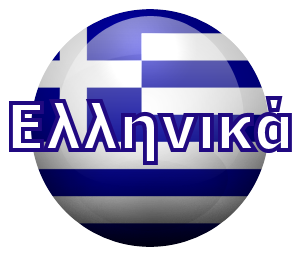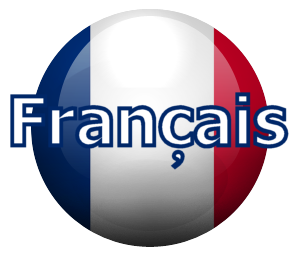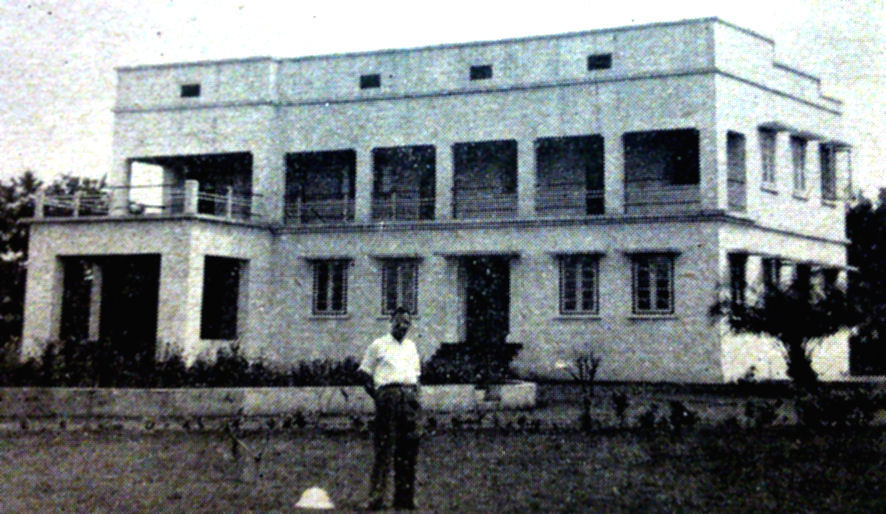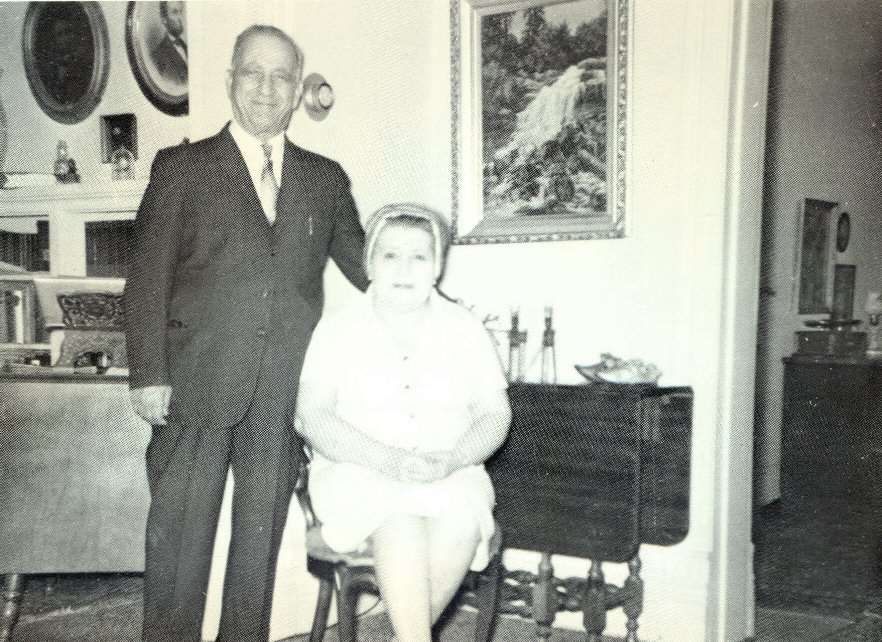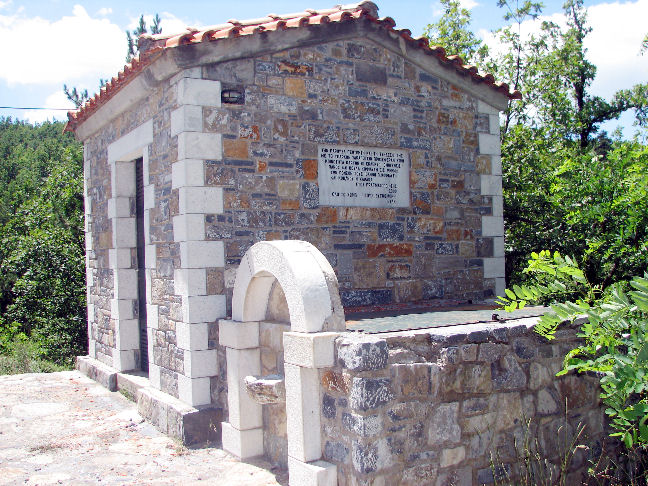Great Benefactors
Athanasios D. Matalas (1836-1922)
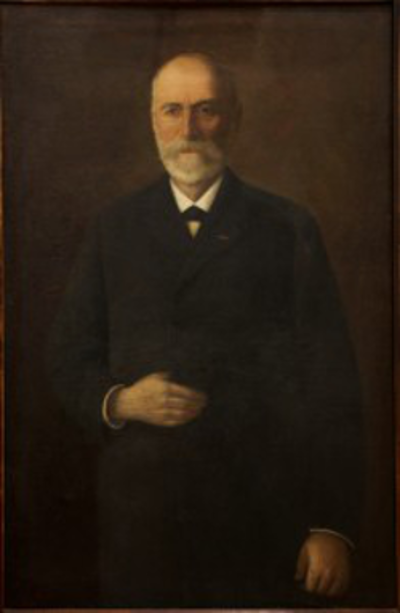 Athanasios D. Matalas was a man with a brilliant mind and enormous feelings, who lived vividly until his late days. He was born in Karyes (Arahova) the 30th of January 1836 and he was the son of An. P. Matala, a fighter of the hellenic revolution in 1821.
Athanasios D. Matalas was a man with a brilliant mind and enormous feelings, who lived vividly until his late days. He was born in Karyes (Arahova) the 30th of January 1836 and he was the son of An. P. Matala, a fighter of the hellenic revolution in 1821.
He finished the primary school in Karyes and then he studied at the Hellenic School of Agios Petros Kinourias (1848-1851). Later on, he studied at the "Sholarheion" and "Gymnasium" (means high school) at Tripoli, where he graduated in 1856. The same year he elisted in the Law School of Athens Univercity.
He was appointed employee at the Greek Consulate of Thessaloniki (1862), at the Consulate of Chania Crete and one month later at Heraklion Crete (1864) and at the Consulate of Istanbul (1866). In August 1866, he was appointed vice consul at Soulina (Romanian port today), at the mouth of Danube. In 1874 he was transferred at Filoppoupolis (Plovdiv in Bulgaria), where he acted as vice consul and consul. He returned in Greece in 1882 and in 1885 he was appointed prefect at Agrolidocorinthia, then at Fthiotis-Fokis and finally at Arcadia. In 1899, he was elected mayor of Oinountos municipality.
During his lifetime, he offered his services to the Greek State as well as to his hometown, Karyes. He died in 1922 at age of 86 and his remains where placed in the entrance of the Agia Paraskevi's grove in Karyes. In the spot there is a headstone with his bust, in which it is carved the saying:
"What a fine thing a human is, when truly human!"(Menander, fragment 761).
The capstone of his beneficence is his will, which founded the Athanasios Matalas Foundation. This foundation gives scholarships to members of Matala's family, to students from Karyes and the rest villages of Lakonia, and it also offers financial support for the maintenance of the Karyes Forest, to the priest and to the doctor, that are servicing Karyes.
Georgios Th. Skiouris (1905-1980)
He was born in Karyes in 1905. He studied at the Primary School of Karyes, at the region's Scholarchion and he graduated from the Commercial School. In 1929, he was appointed mayor of the community of Karyes and then he went to Africa (North Nigeria) where he worked for many years. He came back in 1956 as a pensioner, he settled in Athens and during the summer season he lived in Karyes. He was one of the founder of "Karyatis" S.C., in 1926, under his mayorship the village was renamed from Arachova to Karyes, taking back its ancient name.
In 1958, he donated money to construct the Sports Club's locker rooms which are in use until our days. He also donated money to build the temple of Agios Demetrios near his family home. He died the 7th of November 1980, at age of 75, leaving a self-written will and a committee of trustees which was consisted of the Community president, the Priest, the Primary School administer, the president of A.C. "Karyatis", m. Ioan. Kuriazis, m. Th. Ar. Matalas and Dim. Th. Kakaris (the last two never accepted their appointment and they are not alive today).
The donated Skiouris house
In 1993 and after many difficulties, the remaining trustees helped in the establishment of the G. T. Skiouris Foundation which handles the assets he left, along with the giving of donations and prices that the benefactor appointed in his will. As part of his will, 42 prices (until 10-5-2012) have been given to excellent students of the last grade of Karyes Primary School and gives financial donations to the S.C. "Karyatis". The S.C. "Karyatis" gives a great amount of this donation for the function of the football section and restores the family house of the benefactors as a tribute and gratitude to his generosity.
Peter M. Kerhulas (1891-1982)
Compatriot Panagiotis M. Kerhoulas - Peter Kerhulas was born in Arachova (Karyes, Laconia) on June 20, 1891 and was the son of Michael Christos Kerhoulas and Georgitsa Theod. Diamantourou. After finishing primary school, he left the village on August 16, 1908 for the USA, in search of a better life. He arrived in New York on October 5, 1908, and after many adventures settled permanently in Saint Joseph, Michigan on January 17, 1920. There he bought a farm, began growing fruit and raising chickens, and after 27 years of hard work sold the thriving business, as it was very difficult to compete with the industry at that time. During that period, he married Bertha Tomdie, an attorney, on November 5, 1947. But he did not stop there, with the small capital he acquired, he then engaged in real estate and with hard work, his talent and the help of his wife. he managed to have a comfortable life and create an enviable fortune.
Peter Μ. Kerhulas with his wife Bertha, photo from the book "Karyatika", 1972
Unfortunately, he did not manage to have children with his wife, but he never forgot his homeland and his place of origin, Karyes of Laconia. On February 27, 1976, Peter Kerhulas created the Peter M. Kerhulas Charitable Trust with which he wanted to strengthen his village, Karyes, with an today amount of over 1 million€. The purpose was to promote the quality of life and the available economic opportunities of the village, to help the young people in Karyes to stay in their place and not to need to emigrate, as he was forced in his life. He set a deadline of 40 years since the death of his wife, who died in October 1986, to use these resources. He died on October, 1982 and he was buried in Crystal Springs Cemetery in Benton Harbor, Berrien County, Michigan USA.
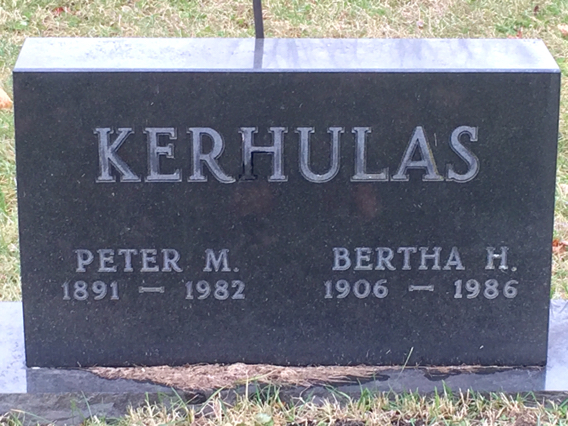
This amount was left unused in an US bank for many years, as the conditions set by the late benefactor were quite difficult to meet. Eventually, with the mobilization of organizations in Greece and other compatriots, the transfer of money to Greece was achieved and then an Association was created to utilize this important financial capital, under the name of Peter Kerhulas Trust Management Association.
Georgios Il. Iliopoulos (1864 - 1931)
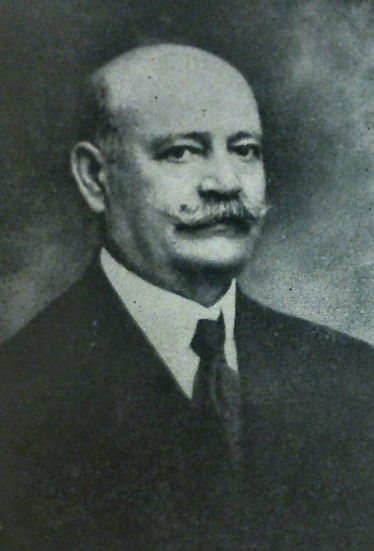 He was born in Arachova on November 21, 1864, died in Vienna in 1931 at the age of 67 and he was buried in Piraeus. He attended Karyes primary school and then the Ellinikon Sxolion and High School in Sparta. With the completion of his high school studies he moved to Piraeusnear to his uncle by the mother's side Athanasios Matalas, next to which he received his first lessons in commerce and accounting during the years 1882-1883.
He was born in Arachova on November 21, 1864, died in Vienna in 1931 at the age of 67 and he was buried in Piraeus. He attended Karyes primary school and then the Ellinikon Sxolion and High School in Sparta. With the completion of his high school studies he moved to Piraeusnear to his uncle by the mother's side Athanasios Matalas, next to which he received his first lessons in commerce and accounting during the years 1882-1883.
The year 1887, he went to Bulgaria and after a few months he moved to the southern Russia, where he settled in stations Kavkaskaya and Izompinaya. During his eight-year stay in Russia, he was honored for his multi-tasking ability and he remained proverbial for his accuracy in his dealings, honesty and uprightness of his character.
He returned to Greece in 1896 and settled again at Piraeus occupying a prominent position among the commercial and political world of the time. He was for years president of the Commercial Association of Piraeus, then president of Piraeus Chamber of Commerce, Councillor Piraeus and Director of the National Bank of Greece, for twenty years until his death.
He played a leading part to the creation of Karyes' aqueduct and with his expenses, the Iliopouleio Orologio (clock) of Karyes was built in 1930, on the hill of Agios Ioannis, which was blown up by the Nazis in 1944.
Paraskevas Ioanni Meindanis (1895 - 1989)
He was born in Karyes in 1895 and he was the son of John Meindanis and Marigo N. Leventis. He finished elementary school Arachova and the Scholarchion at Vamvakou. In 1905, he left for the USA together with his brother Nicholas and several other young people due to poverty. He began polishing shoes in Omaha, Nebraska, worked as a railway man, but his love for education made him attend nightly public schools and later studied at the College of Economics and Business. In 1918, he served in the US Army in France as broadcaster, in 1919, he returned to Greece and in 1921 he got married with Chaido N. Charakas, taking with her again the road of foreign lands. He settled in Spartanburg, North Carolina, and he had four (4) children; Ioannis (doctor), Nikolaos (dentist), Georgios (Electrical-Mechanical Engineer) and Maria, wife of George Trakas, who accompanied him until the end. In 1931, he returned to Greece and settled in Tripoli so as his children to get Greek education and to be close to his hometown. After the war in 1945, he left permanently for the USA.
He is the writer of the "Bible of Brotherhood" (1927) and together with his son, Ioannis, wrote the precious two-volume "Karyatika" (1950 and 1972), an enormous historical, folkloric and sociopolitical project of importance for Karyes. A project awarded by the Academy of Athens, the result of countless hours of work, which recorded the life and history of the village and of the Omogenia. At the same time he was editor of the Gastonia Brotherhood Bulletin for 25 years.
He was the master mind and pioneer in unprecedented beneficial effect of the Brotherhood to which he was Secretary for 25 years, the rapporteur of the establishing of the brotherhoods in USA, Canada and Australia and the main organizer of the migration efforts and permanent installation of tens of compatriots in the US. But especially he was the "deus ex machina" for the rescue of many compatriots from the shooting of the occupying forces during the tragic and unforgetable day of September 19th, 1943, with the looting and burning of Karyes as he was member of the International Red Cross under the supervision of the Swedish University Professor Alexander Persson.
Paraskevas Meintanis died in Gastonia, North Carolina, at old age on 07.13.1989.
Source:
Newspaper "Karyes", Vol. 16, Annita Glekas-Prekezes
Modern Karyes Lakonias, Panagiotis Styl. Machairas
Demosthenes Matalas (1831-1905)
He was the grandson of the governor of Karyes during the Revolution Dimitrios G. Matalas and the son of the hero of the Revolution Paraskeva, who was elected in 1844 MP Lacedaemon in the first Greek parliament and remained in this position with the love of his fellow citizens until his death.from poisoning in 1855.
Τhe young Demosthenes was distinguished for his courage and insight. In 1862, at the age of 31, when groups of rioters from Mani invaded central Laconia and moved to the villages of Parnon, he gathered 250 warriors and defeated them at Levetsova (Krokees) and Tarapsa (Chania Vasilakiou). This fame resulted in him being elected mayor of Oinountos in 1866, being continuously elected until 1882, that is, for 16 consecutive years. During his tenure, he created a strong municipal police, as a result of which animal theft was eliminated and livestock farming prospered, which reached 70,000 animals, while also strengthening agriculture.
After failing to be re-elected mayor for a few votes in 1882, he ran for parliament and was elected in 1884 Laconia MP. His major projects include the planting of trees on the streets of the new city of Sparta and the construction of the two-arched stone bridge over the river Deiros in Karyes. It was his attempt to pass the Spartis-Tripoleos road through the villages of Parnonas. However, his party lost the elections and the new government paved the current road (Fotinou-Monodendri- Sellasia) which does not pass through residential areas.
His compatriots honored him continuously after he remained an MP until 1905, when he died at the age of 74..
Dr Panagiotis Nikolaou Leventis (1850-1921)
Born in 1850, he was the second son of Nikolaos Leventis and Giannoula and a member of a historical family of the village.
His paternal grandfather was the Revolutionary fighter Zacharias Leventakis who after taking part in a series of battles (Kerasia, Valtetsi, Vervena, Doliana) finally lost his life during the fall of Tripoli. His maternal grandfather was the second historian priest of Karyes, Papa-Nikolas Leventakis (1770-1845). His father, Nikolaos, was a graduate of the first Greek High School in Nafplio.
After graduating from Sparta High School, he was admitted to the Medical School of the National University of Athens, together with his older brother Zacharias. Unfortunately, his brother died during his studies, while Panagiotis graduated in 1876. Immediately after, he settled in Arachova, refusing to leave for Athens or any other city in order to always be next to his fellow villagers. Every day he served them not only as a general practitioner, but also as a surgeon, obstetrician, dentist, psychiatrist, while due to the lack of other means he often worked as a pharmacist, since he prepared the medicines himself. Signed under the oath of Hippocrates, he never set as his primary condition his remuneration for the provision of any medical services and for this reason he never asked for money from his fellow villagers who were poor.
For the above reasons, the Arachovites honored him and constantly appointed him their representative, since he was always at the forefront of defending the interests of the village.
For this reason, in 1888, he was elected Mayor of Oinountos, a position he served until 1892, when he immediately gave his position to the great Benefactor Athanasios Matala, who returned to his hometown to offer to his villagers after a long career in diplomatic body.
Given that the Municipalities were not fully functional for the data of the time, the inhabitants of the village founded in 1900 the "Committee of Plenipotentiaries of Arachova" and elected Panagiotis Leventis immediately president. In parallel with the presidency of the Committee for a number of years, Panagiotis Leventis after the departure of Athanasios Matalas was re-elected as Mayor of Oinountos (1908-1914), when the Municipalities were abolished and the community of Arachovi returned.
He built the fountain at the source of Panagia and together with the Benefactor Ath. Matalas he contributed to the creation and preservation of the Karyes Forest. On his own initiative, the famous meeting took place in the old Community Building in 1919, in which the Arachovites of America also participated and where the decision was made for the construction of the great water supply project and the occasion for the creation of the Brotherhood in America.
He married in 1900 at an old age (50 years old) Efthymia Giatimi from Tripoli, he had no children and due to his selfless contribution at the end of his life he sold all his property. It should be noted that he had two other younger brothers, Paraskevas (1852-1911) and Georgios (1861-1922), who did not marry and therefore this generation had no descendants. Only his sister Marigo married and had children (Meidani).
He died in Arachova in 1921 at the age of 71 and may have left no inheritance or property as other prominent Arachovites did, but only a social testament to be imitated by future scientists.
Georgios Chr. Koutsikos
George Chr. Koutsikos left all his fortune to Karyes and his money were used to the construction of Karyes' aqueduct in 1927, which supplies water to the whole area.
Konstantinos Vrinios
He was born in 1913 in Karyes, he finished the Elementary School of Karyes, the High School of Sparta, the Dental School of Athens University and he was married to Marika Vriniou-Xrysikou. For many years was the Director of the Dental Department of the Hospital "Alexandra", while it had also his private practice. He was kind-hearted and beloved man, he offered his services as a dentist and served all the his fellow compatriots in order be imported in hospitals in Athens and find care during the difficult years after the 2nd WW until his death on November 29, 1980. Not having children, his wife Marika with whom they share their love for Karyes, went to the realization of his desire and donated the house he was born to the Community of Karyes, in order to be used for the needs of Karyes' Community Clinic. Indeed on 18 August 1987, the representatives of the Karyes' Community accepted the donation with a moving ceremony and since then it serves as the seat of the Community Clinic.
Panagiotis Ι. Karigiannis
The benefactor Panagiotis I. Karygiannis and his wife Panagiota, nee Dim.I. Haraka, with their will donated a two-storey house in Athens, with the purpose of its income (rents and future sales) to provide for the contruction of the new Church of Agios Andreas.
Dimitris Voukidis (or Koutsouris)
Dimitris Voukidis left all his fortune to the Church of Agios Andreas, the cathedral of Karyes.
Paraskevas Κ. Panousis
Paraskevas Κ. Panousis left all his fortune to the Primary School of Karyes.
Georgios P. Karigiannis
Georgios P. Karigiannis left all his fortune and his rich in books library to the Primary School of Karyes.
Panos and Voula Kopsiaftis
With their donation and after many drillings in the wider area of Karyes, a source of pure water was found. Their donation contributed also to the connection of this source of water with the village's watering system, solving with this way the chronic lack of pure and drinkable water-supply.


